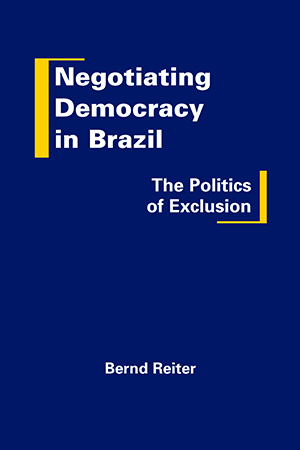Latin America and the Caribbean
Mexico made a peaceful transition to democracy when it elected opposition candidate Vicente Fox president in July 2000—an event that has had a profound impact on the country's More >
Painting a sober yet hopeful picture of current Mexican politics and economics, Mexico's Democracy at Work focuses on the country's still incomplete transformation from an More >
Mexico's presidential elections in July 2000 brought victory to National Action Party (PAN) candidate Vicente Fox—and also the hope of democratic change after decades of More >
As electoral politics in Mexico have become more open and democratic, the country's economy also has been thoroughly restructured and new ideas about government, state-society relations, More >
Mexico’s private sector continues to confront challenges imposed not only by reforms in the country’s economic and political systems, but also by demands of the international More >
Why has Mexico's political left been in such turmoil since the dramatic 2006 election? What explains the contentious relationship between the country's largest left-wing party, the More >
In this follow-up to his widely read The Struggle for Human Rights in Latin America, Edward Cleary examines some of the robust human rights movements of the past two decades. More >
Edouard Glissant's Monsieur Toussaint tells the tragic story of Toussaint L'Ouverture, the charismatic leader of the revolution—the only successful slave revolt in More >
Ann Kingsolver presents stories people have told about NAFTA—young people and old, urban and rural, with differing political perspectives, occupations, and other markers of More >
How did Mexico and Central America become a lawless corridor for conveying narcotics into the United States? How did the drug cartels rise to power, succeeding in institutionalizing the More >
Do societal inequalities limit the effectiveness of democratic regimes? And if so, why? And how? Addressing this question, Bernd Reiter focuses on the role of societal dynamics in More >
Since the 1970s, Nicaragua has experienced four major regime changes—shifts in its fundamental logic, structure, and operational code of governance. What accounts for such instability? More >
In 1990, Nicaraguans voted out the revolutionary Sandinista regime and replaced it with the conservative government of President Violeta Chamorro. Chamorro's term of office was marked by More >
With tourism lauded throughout Latin America as a sure engine of economic growth, actual performance in the sector has varied to an extreme degree. Kirk Bowman asks why. Why did states More >
When Peru's APRA—one of the oldest and most controversial political parties in Latin America—came to power in 1985, expectations were high for the new government, in part More >




















